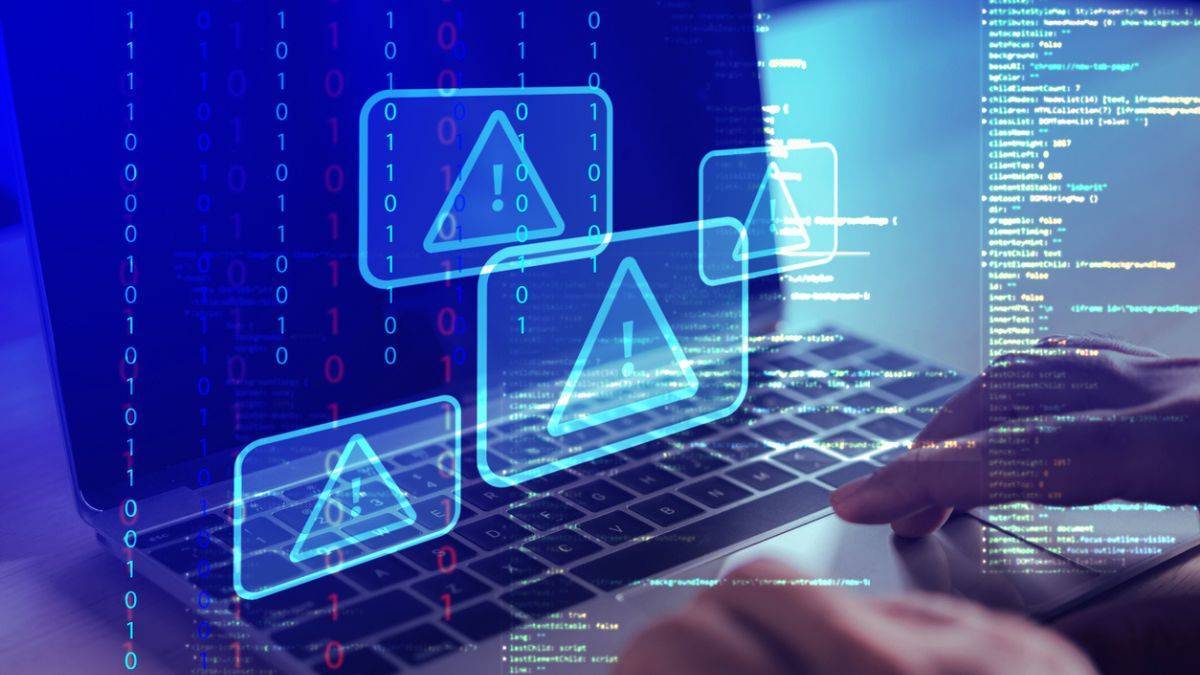What is EDR and why it matters in cyber security
Endpoint Detection and Response (EDR), is a critical technology within the realm of cyber security, designed to monitor and respond to cyber threats targeting endpoints such as laptops, desktops and servers. Endpoints represent some of the most vulnerable assets in a business environment. This makes EDR security not only essential but also one of the cornerstones of modern cyber security strategies.

Endpoint Detection and Response (EDR), is a critical technology within the realm of cyber security, designed to monitor and respond to cyber threats targeting endpoints such as laptops, desktops and servers. Endpoints represent some of the most vulnerable assets in a business environment. This makes EDR security not only essential but also one of the cornerstones of modern cyber security strategies.
EDR solutions continuously monitor these endpoints, identifying suspicious activity and providing real-time analysis to swiftly respond to potential attacks. With the rise of sophisticated cyber threats like ransomware and advanced persistent threats (APTs), businesses need to implement robust EDR tools to safeguard their data and operations.
Understanding EDR
Endpoint detection & response refers to the capability of detecting, investigating, and responding to suspicious activities on endpoints. These activities can range from unauthorised access to malicious software deployment. The primary goal for EDR is to provide visibility into the security posture of an organisation’s endpoints and enable rapid response to threats.
Understanding the EDR meaning in security goes beyond just recognising its acronym. It’s about grasping the importance of continuous monitoring, automated responses and real-time data analysis that help prevent potential breaches.
Why endpoint detection and response security is critical
Endpoint detection and response (EDR) security is essential for businesses, regardless of their size, as endpoints are often the weakest links in a company’s network.
Devices like laptops, desktops and mobile phones serve as entry points for cybercriminals looking to exploit vulnerabilities and gain unauthorised access.
With the rise of remote work, the number of endpoints outside traditional corporate networks has grown, making them even more susceptible to attacks.
As a result, ensuring robust EDR security has become a top priority to protect sensitive data and maintain business continuity.
Without an effective EDR security solution, an organisation risks being blind to malicious activities happening on these endpoints. EDR provides advanced capabilities, such as behavioural analytics and machine learning, to detect even the most subtle anomalies that might indicate a security threat.
By integrating EDR endpoint security, companies can strengthen their ability to combat attacks in real-time, which is particularly crucial for defending against modern, dynamic threats like ransomware.
How EDR endpoint security detects and responds to threats
EDR endpoint security tools continuously collect and analyse data from endpoint devices to detect anomalies. When unusual behaviour is detected, such as a user accessing files they shouldn’t or malware trying to establish connections to external servers, the EDR system triggers an alert.
Here’s a breakdown of the EDR security meaning in practice:
- Data Collection: EDR tools gather data such as process information, log files, network connections, and system configurations from each endpoint.
- Threat Detection: Using algorithms and machine learning, the system analyses this data to identify abnormal patterns.
- Automated Response: Once a threat is detected, EDR can automatically take action, such as isolating the infected endpoint from the network, halting suspicious processes, or deploying patches.
This proactive approach helps mitigate potential damage before a threat spreads further.
Essential features of EDR cyber security solutions
A robust EDR cyber security solution typically includes several key components that help enhance endpoint security:
- Real-Time Monitoring: Continuous surveillance of all endpoint activity, ensuring threats are detected as soon as they emerge.
- Behavioural Analytics: Identifies patterns and behaviours that deviate from the norm, allowing the detection of unknown threats.
- Automated Threat Response: Provides the ability to quickly respond to threats by isolating affected systems, blocking suspicious files, and notifying security teams.
- Forensics and Investigation Tools: EDR systems store historical data, enabling security teams to investigate past incidents, track threat origins, and improve future defences.
With these features, EDR in cyber security gives companies the upper hand in defending against advanced threats.
The relationship between EDR and managed detection and response
Many companies, particularly those without in-house cyber security teams, opt for managed detection and response (MDR) services, which incorporate EDR solutions. MDR providers, like EK.co, offer 24/7 monitoring, incident response and threat hunting, ensuring that EDR systems are optimally configured and managed.
By partnering with an MDR provider, businesses gain access to advanced endpoint detection and response capabilities without the need to maintain a dedicated security team.
Advantages of implementing EDR security solutions
There are numerous benefits to implementing EDR endpoint security, including:
- Improved Threat Detection: EDR tools can detect even the most subtle, sophisticated threats that traditional security measures may miss.
- Faster Response Times: Automated responses help contain threats in real-time, reducing the potential damage caused by a breach.
- Increased Visibility: Security teams gain insights into what’s happening across the network, enabling more informed decision-making.
- Reduced Risk of Data Breaches: By detecting and isolating threats early, EDR helps prevent costly data breaches.
Conclusion
As cyber threats grow more sophisticated, traditional security measures like antivirus software and firewalls are no longer sufficient to protect a company’s endpoints from complex attacks. EDR offers real-time monitoring, behavioural analysis and automated threat response, providing businesses with a proactive approach to cyber security. By detecting and mitigating threats before they cause significant damage, EDR helps safeguard sensitive data, ensure business continuity, and maintain compliance with security regulations.
Whether you manage your own EDR solution or opt for a managed detection and response (MDR) service like those offered by Ekco, implementing EDR is a critical step towards enhancing your organisation’s security posture. By integrating EDR into your cybersecurity framework, you can confidently face today’s cyber threats and protect your endpoints from future attacks.

Question?
Our specialists have the answer
